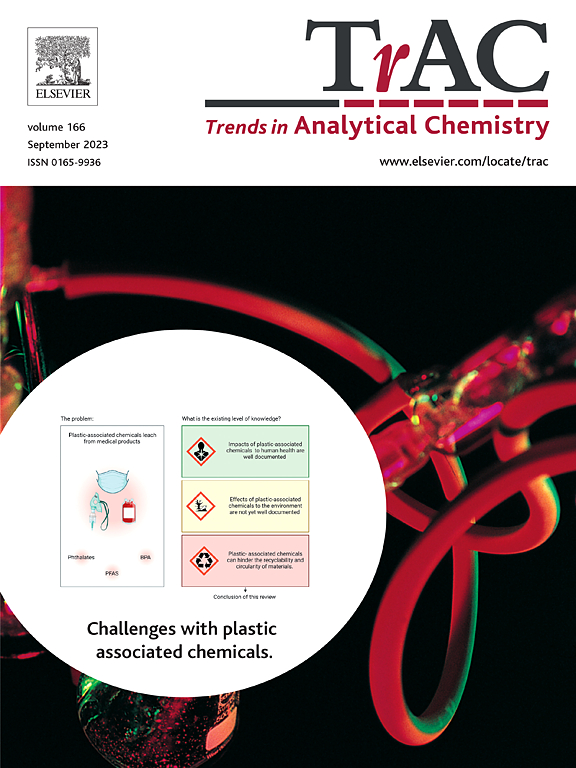Advancements of prokaryotic Argonautes in molecular diagnostics and future perspectives
IF 11.8
1区 化学
Q1 CHEMISTRY, ANALYTICAL
引用次数: 0
Abstract
Due to the notable biological advantages, programmable nucleases have become a groundbreaking class of tools in the field of nucleic acid testing (NAT). Prokaryotic Argonautes (pAgos), a subclass of Argonaute proteins, represent an emerging class of nucleases that offer greater flexibility compared to conventional CRISPR/Cas systems and hold tremendous biotechnological potential. Recent advancements in pAgo-mediated NAT have opened new avenues for the development of rapid and highly sensitive nucleic acid detection methods. In this review, we first undertake a comprehensive exploration of pAgos in structural diversity and the molecular mechanisms of guide and target binding by pAgos. Further, a comparison analysis of pAgos and CRISPR/Cas nucleases is conducted, focusing on their similarities, differences, and complementarities, with the understanding of what is crucial for the rational design of novel NAT. Afterward, the recent progress of the different pAgo-mediated biosensor platforms is summarized, and the associated challenges and perspectives are discussed. With comprehensive illustration, the goal of this review is to provide new insights and perspectives for developing next-generation nucleic acid detection platforms.
求助全文
约1分钟内获得全文
求助全文
来源期刊

Trends in Analytical Chemistry
化学-分析化学
CiteScore
20.00
自引率
4.60%
发文量
257
审稿时长
3.4 months
期刊介绍:
TrAC publishes succinct and critical overviews of recent advancements in analytical chemistry, designed to assist analytical chemists and other users of analytical techniques. These reviews offer excellent, up-to-date, and timely coverage of various topics within analytical chemistry. Encompassing areas such as analytical instrumentation, biomedical analysis, biomolecular analysis, biosensors, chemical analysis, chemometrics, clinical chemistry, drug discovery, environmental analysis and monitoring, food analysis, forensic science, laboratory automation, materials science, metabolomics, pesticide-residue analysis, pharmaceutical analysis, proteomics, surface science, and water analysis and monitoring, these critical reviews provide comprehensive insights for practitioners in the field.
 求助内容:
求助内容: 应助结果提醒方式:
应助结果提醒方式:


